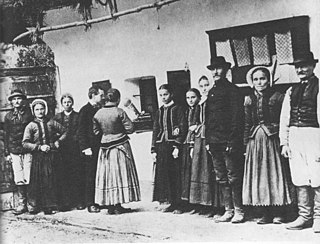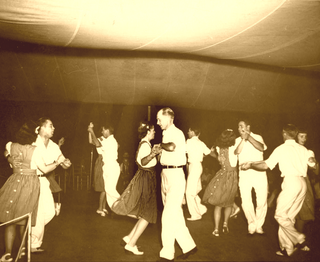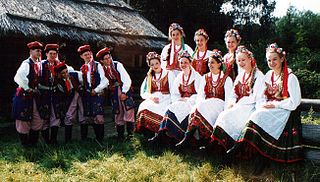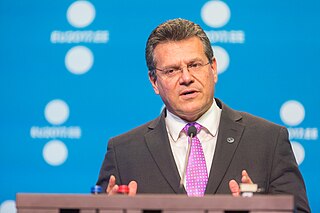This article does not cite any sources .(March 2019) (Learn how and when to remove this template message) |
The Odzemek (in slovak Odzemok) is a Slovak solo traditional dance for men which always has an improvised character. It has a rather fast tempo and it is traditionally danced in Slovakia and also Moravian Wallachia. The name Odzemok comes from the words 'od zeme,' which means 'from the ground.'

Slovakia, officially the Slovak Republic, is a landlocked country in Central Europe. It is bordered by Poland to the north, Ukraine to the east, Hungary to the south, Austria to the west, and the Czech Republic to the northwest. Slovakia's territory spans about 49,000 square kilometres (19,000 sq mi) and is mostly mountainous. The population is over 5.4 million and consists mostly of Slovaks. The capital and largest city is Bratislava, and the second largest city is Košice. The official language is Slovak.

Dance is a performing art form consisting of purposefully selected sequences of human movement. This movement has aesthetic and symbolic value, and is acknowledged as dance by performers and observers within a particular culture. Dance can be categorized and described by its choreography, by its repertoire of movements, or by its historical period or place of origin.

Moravian Wallachia, is a mountainous region located in the easternmost part of Moravia in the Czech Republic, near the Slovak border, roughly centered on the cities Vsetín, Valašské Meziříčí and Rožnov pod Radhoštěm. The name Wallachia used to be applied to all the highlands of Moravia and the neighboring Silesia, although in the 19th century a smaller area came to be defined as ethno-cultural Moravian Wallachia. The traditional dialect represents a mixture of elements from the Czech and Slovak languages, and has a distinct lexicon of Romanian origin relating to the pastoral economy of the highlands. The name originated in the "Vlachs", an originally Romance-speaking community that migrated to Moravia.
Composers such as Antonín Dvořák composed these dances. The first dance from the Slavonic Dances Op. 72 is an odzemek.
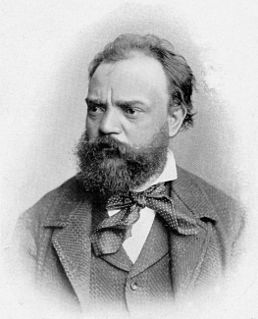
Antonín Leopold Dvořák was a Czech composer, one of the first to achieve worldwide recognition. Following the Romantic-era nationalist example of his predecessor Bedřich Smetana, Dvořák frequently employed rhythms and other aspects of the folk music of Moravia and his native Bohemia. Dvořák's own style has been described as "the fullest recreation of a national idiom with that of the symphonic tradition, absorbing folk influences and finding effective ways of using them".

The Slavonic Dances are a series of 16 orchestral pieces composed by Antonín Dvořák in 1878 and 1886 and published in two sets as Op. 46 and Op. 72 respectively. Originally written for piano four hands, the Slavonic Dances were inspired by Johannes Brahms's own Hungarian Dances and were orchestrated at the request of Dvořák's publisher soon after composition. The pieces, lively and full of national character, were well received at the time and today are considered among the composer's most memorable works, occasionally making appearances in popular culture.
